STUDIES CURRENTLY SUPPORTED BY DOLPHIN QUEST
Highlighted below are some of the General Science and Conservation studies that received funding and/or in-kind support from Dolphin Quest.
Bottlenose Dolphin Health Assessments in Sarasota Bay, FL
With only a few exceptions since 1997, Dolphin Quest has been the primary organization supporting bottlenose dolphin health assessment operations in Sarasota Bay, Florida, building on the pioneering catch-and-release life history and health research…
CHICAGO ZOOLOGICAL SOCIETY’S SARASOTA DOLPHIN RESEARCH PROGRAM FLORIDA
Passive Hormone Analysis in Sea Mammals (P.H.A.S.M.)
Potential anthropogenic stressors on marine fauna continue to increase, yet how marine mammals fare under these conditions remains largely unknown. For example, noise sources may trigger a stress response…
STEPHEN F. AUSTIN STATE UNIVERSITY | OKLAHOMA AEROSPACE INSTITUTE FOR RESEARCH AND EDUCATION
Bermuda Cetacean Research Project
The Bermuda Cetacean Research project was developed to study marine mammals around the waters of Bermuda. This scientific research includes the Bermuda Cetaceans Sighting Project, The Bermuda Dolphin Conservation Project and…
CHICAGO ZOOLOGICAL SOCIETY’S SARASOTA DOLPHIN RESEARCH PROGRAM, DUKE UNIVERSITY, FUNDACIÓN OCEANOGRAFIC DE LA COMUNIDAD VALENCIANA BERMUDA
Bermuda Dolphin Conservation Project and Dolphin Tracking Project
The Bermuda Cetacean Research project was developed to study marine mammals around the waters of Bermuda. This scientific research includes The Bermuda Dolphin Conservation Project and the Dolphin Tracking Project…
CHICAGO ZOOLOGICAL SOCIETY’S SARASOTA DOLPHIN RESEARCH PROGRAM, DUKE UNIVERSITY, FUNDACIÓN OCEANOGRAFIC DE LA COMUNIDAD VALENCIANA, BERMUDA
Assessing the Age-Structure of the Spinner Dolphins in Kona using Drone Photogrammetry
We proposed to assess the feasibility of using Unoccupied Aerial System (UASs; drones) to readily determine delphinid group age-composition and population age-structure of the spinner dolphin stock in Kona, Hawaii Island…
MARINE MAMMAL RESEARCH PROGRAM, UNIVERSITY OF HAWAII AT MANOA HAWAII, UNITED STATES
Quantifying Humpback Whale Health across Hawaii and Southeast Alaska in the Face of Human Impacts and Climate Change
Humpback whales (HBW) are educational, cultural, and economic pillars in Hawai’i. Between 2013-2019, declines in HBW abundance and reproduction were documented throughout the North Pacific. These declines coincided with…
MARINE MAMMAL RESEARCH PROGRAM, UNIVERSITY OF HAWAII AT MANOA HAWAII, UNITED STATES
An Integrated Physiology and Proteomics Analysis to Define Molecular Adaptations to Diving
Marine mammals exhibit remarkable physiological changes during diving including a reduction in cardiac output and selective perfusion of tissues with oxygen-rich blood. This response reduces the rate of oxygen depletion…
DUKE UNIVERSITY | FUNDACION OCEANOGRAPHIC HAWAII, UNITED STATES
The Effects of Anthropogenic Noise on Attention, Learning, Memory, and Communication in Bottlenose Dolphins
As human activities continue to expand across the globe, the level of consequential anthropogenic, human-made, noise continues to rapidly increase. Sources of oceanic anthropogenic noise include private and commercial boat traffic…
STEPHEN F. AUSTIN STATE UNIVERSITY | OKLAHOMA STATE UNIVERSITY | WOODS HOLE OCEANOGRAPHIC INSTITUTION | AARHUS UNIVERSITY HAWAII, UNITED STATES
Behavioral and Acoustic Ecology of Offshore Dolphins
This project collaborates with the Sarasota Dolphin Research Project to temporarily capture offshore dolphins in the Gulf of Mexico (bottlenose dolphins and spotted dolphins) and instrument them with sound and movement recording DTAGs…
AARHUS UNIVERSITY | CETACEAN COMMUNICATION RESEARCH | CHICAGO ZOOLOGICAL SOCIETY FLORIDA, UNITED STATES
Standardization of a Global Approach to Quantitate Oxytocin in Serum and Urine of Bottlenose Dolphins
The hormone oxytocin is common in mammals and plays a major role in social bonding. Oxytocin is released when an animal experiences a positive social interaction and…
UNIVERSITY OF HAWAII | ROSS UNIVERSITY | UNIVERSITY OF SAINT ANDREWS FLORIDA, UNITED STATES
Assessing the Feasibility of Quantifying the Body Condition of Small Delphinids using UAS-Photogrammetry
Environmental and anthropogenic stressors can alter vital rates of individuals and subsequently impact populations of wildlife. Early detection of possible effects of stressors on individuals would constitute a powerful tool…
MARINE MAMMAL RESEARCH PROGRAM, UNIVERSITY OF HAWAII AT MANOA HAWAII, UNITED STATES
Using TADpole-Deployed Satellite Tags to Study Diel Movements of Spinner Dolphins in Hawaiian Waters
Spinner dolphins in Hawaii spend the day in nearshore habitats where they are almost constantly exposed to human activities. Evidence of a decline in one population has raised concerns…
CASCADIA RESEARCH COLLECTIVE | SARASOTA DOLPHIN RESEARCH PROGRAM HAWAII, UNITED STATES
Creating a Blubber Extraction Protocol for Analysis of Persistent Organic Pollutants in Pacific Island Cetaceans
Persistent organic pollutants (POPs) are a class of synthetic toxic contaminants (e.g., DDT, PCBs) that are a documented threat to marine mammals. In general, POPs magnify up the aquatic food web…
UNIVERSITY OF HAWAII | ROSS UNIVERSITY SCHOOL OF VETERINARY MEDICINE | UNIVERSITY OF CALIFORNIA, DAVIS HAWAII, UNITED STATES
Deploying Suction-Cup attached Data Logging Tags by Drone to Examine Diving and Nighttime Behavior of Difficult-to-Approach Species
Until recently, suction-cup attached data logging tags have been deployed either by a long pole or by a crossbow in order to obtain information on the diving and sub-surface behavior of whales and dolphins…
CASCADIA RESEARCH COLLECTIVE HAWAII, UNITED STATES
JOIN DOLPHIN QUEST AND GET INVOLVED
Dolphin Quest’s unwavering support for general science and conservation studies for marine mammals is evident through our active participation in research initiatives and partnerships with scientific institutions. By providing resources, expertise, and access to their facilities, Dolphin Quest empowers researchers to deepen our understanding of marine mammals, contributing crucial data that fuels conservation efforts and informs broader scientific knowledge.
You too can get involved by submitting proposals for studies and funding that focus on general science and conservation studies for marine mammals, or you can sponsor scientific studies directly by clicking one of the buttons below:
